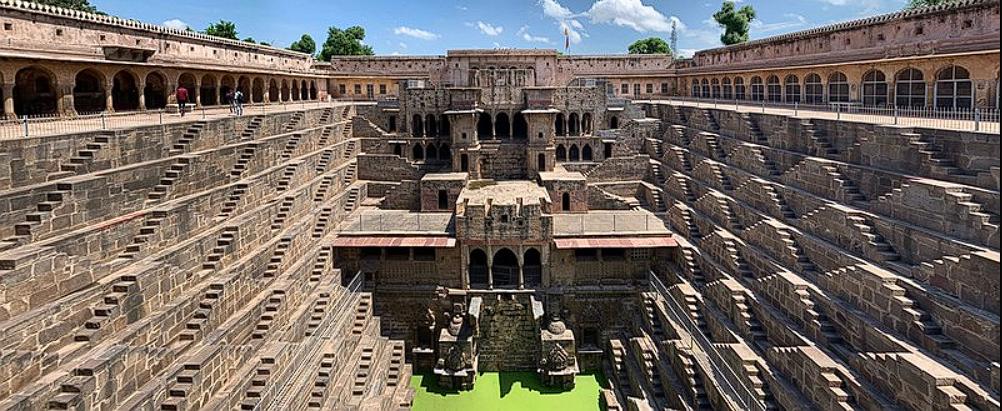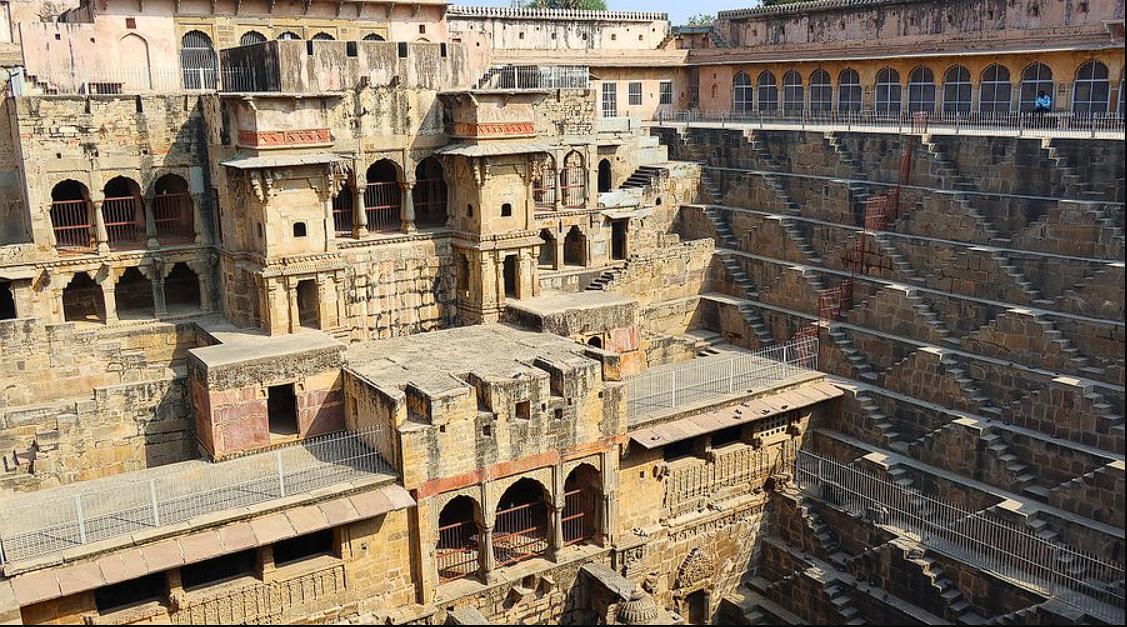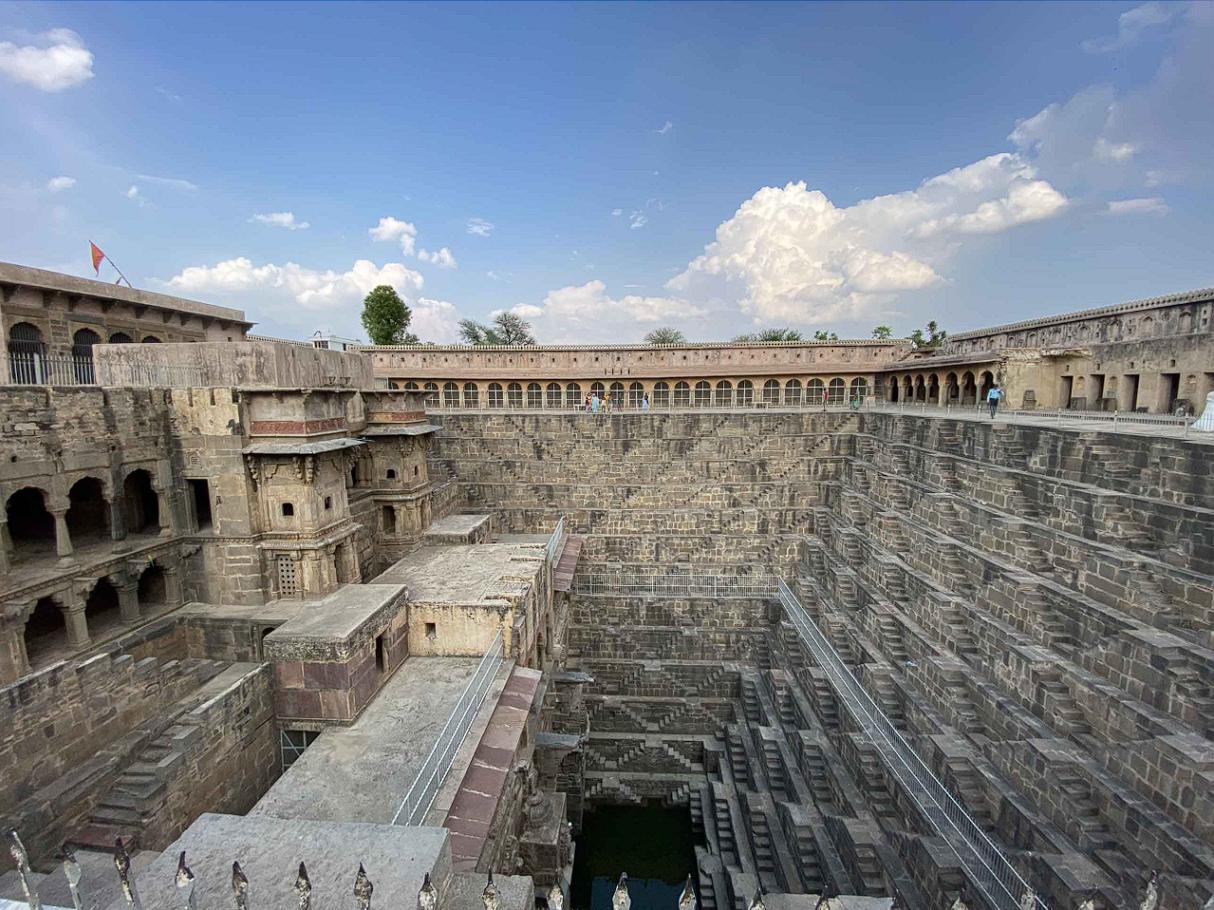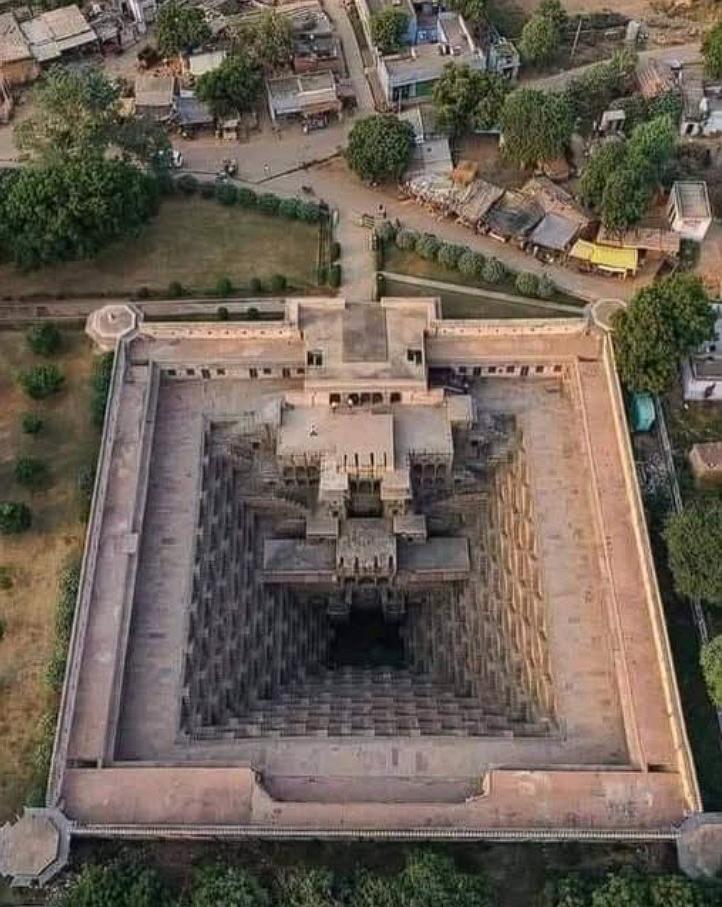Chand Baori, located in the village of Abhaneri, Rajasthan, India, is an architectural marvel that stands as a testament to the ingenuity and skill of ancient Indian builders. This stepwell, over 1,000 years old, is one of the largest and most stunning examples of its kind in the world.
The Construction of Chand Baori
The construction of Chand Baori reflects the advanced engineering and architectural skills of ancient Indian builders.
Historical Context
Chand Baori was built in the village of Abhaneri, Rajasthan, India, during a period of significant architectural and engineering development.

- Ancient Construction:
- The stepwell is over 1,000 years old, dating back to a time when advanced engineering techniques were employed.
- Its construction reflects the builders’ deep understanding of geometry, mathematics, and physics.
- Water Management:
- The primary purpose of Chand Baori was to provide a reliable water source in the arid region of Rajasthan.
- Its design allowed for the efficient collection and storage of rainwater.
- Architectural Significance:
- The stepwell’s intricate design and symmetrical arrangement of steps highlight its architectural significance.
- It stands as a testament to the builders’ skill and vision.
Engineering and Design
The engineering and design of Chand Baori demonstrate the advanced knowledge and skills of its builders.

- Geometric Precision:
- The stepwell’s 3,500 symmetrically placed steps showcase the builders’ mastery of geometry.
- The precise arrangement of the steps ensures structural stability and aesthetic appeal.
- Depth and Structure:
- The stepwell descends 100 feet, with 13 floors, demonstrating the builders’ ability to create complex underground structures.
- The depth and structure of the well allowed for the storage of a large volume of water.
- Step Arrangement:
- The thin steps are arranged in a precise pattern, creating a visually stunning and functional design.
- This arrangement allowed people to easily access the water at various levels.
Construction Techniques
The construction techniques used in Chand Baori reflect the builders’ expertise in working with stone and creating durable structures.

- Stone Masonry:
- The stepwell is constructed using stone masonry, a technique that requires skilled craftsmanship.
- The use of stone ensures the structure’s longevity and resilience.
- Symmetrical Placement:
- The symmetrical placement of the steps required careful planning and execution.
- This precision highlights the builders’ attention to detail and their mastery of construction techniques.
- Durable Structure:
- The stepwell’s durable structure has allowed it to withstand the test of time, remaining a marvel of ancient engineering.
- Its construction reflects the builders’ ability to create structures that could endure for centuries.
Significance and Legacy
Chand Baori’s significance extends beyond its architectural beauty, encompassing its historical, cultural, and functional importance.
Historical Importance
Chand Baori’s historical importance lies in its role as a vital water source and a symbol of ancient Indian engineering.

- Water Source:
- The stepwell served as a crucial water source for the people of Abhaneri, particularly during dry seasons.
- Its construction ensured the availability of water for drinking, bathing, and other purposes.
- Cultural Symbol:
- Chand Baori has become a symbol of ancient Indian architecture and engineering.
- It represents the rich cultural heritage of Rajasthan and India.
- Historical Landmark:
- The stepwell is a historical landmark, attracting visitors and researchers from around the world.
- It provides valuable insights into the lives and skills of ancient Indian builders.
Cultural Significance
Chand Baori’s cultural significance is evident in its architectural beauty and its role in local traditions and customs.

- Architectural Beauty:
- The stepwell’s intricate design and symmetrical arrangement of steps make it a visually stunning structure.
- Its beauty reflects the artistic and aesthetic sensibilities of ancient Indian builders.
- Local Traditions:
- Chand Baori is an integral part of local traditions and customs, serving as a gathering place and a symbol of community.
- It plays a role in various cultural events and festivals.
- Artistic Inspiration:
- The stepwell has inspired artists, architects, and designers, serving as a model for innovative and sustainable architecture.
- Its design elements have been incorporated into contemporary structures.
Contemporary Relevance
Chand Baori’s contemporary relevance lies in its role as a tourist attraction and its potential for inspiring sustainable water management practices.
- Tourist Attraction:
- The stepwell is a popular tourist attraction, drawing visitors from around the world.
- It contributes to the local economy and promotes cultural tourism.
- Educational Resource:
- Chand Baori serves as an educational resource, providing opportunities for learning about ancient Indian architecture and engineering.
- It is a valuable asset for schools and educational institutions.
- Sustainable Water Management:
- The stepwell’s design and function offer insights into sustainable water management practices.
- It serves as a reminder of the importance of conserving and efficiently utilizing water resources.
Chand Baori stands as a testament to the ingenuity and skill of ancient Indian builders. Its architectural beauty, historical significance, and contemporary relevance make it a marvel of human achievement.
